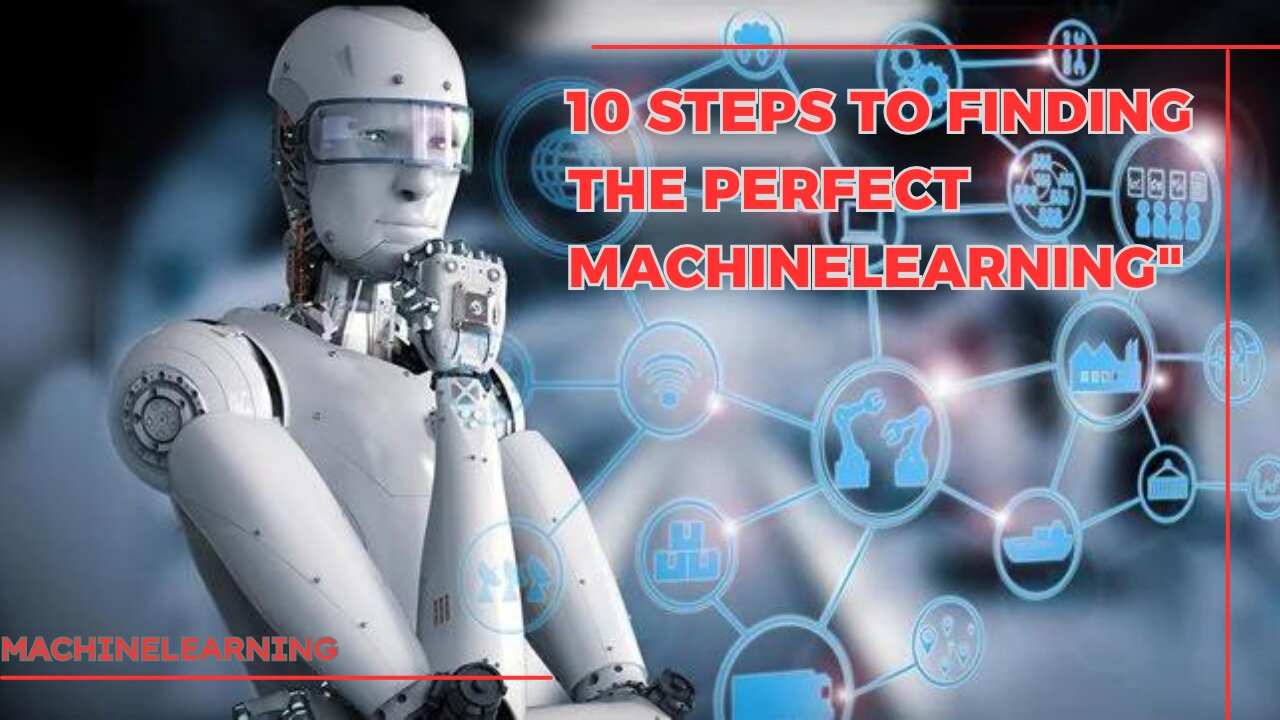Premium Only Content

10 step to finding perfect ,machinelearning
10 Steps to Finding the Perfect Machinelearning" in detail
Step 1: Define Your Problem Statement The first step to finding the perfect machine learning model is to define your problem statement. This involves understanding what you want to achieve through machine learning, what data you have available, and what your constraints are. For instance, you might want to build a model to predict customer churn, based on data about past customer behavior. Defining the problem statement clearly will help you determine which machine learning algorithm to choose.
Step 2: Collect and Prepare Data Once you have defined your problem statement, you need to collect and prepare the data for analysis. This involves gathering data from various sources, cleaning and transforming it into a format that can be used by machine learning algorithms. You need to ensure that the data is relevant, accurate, and complete, and that it represents the problem you are trying to solve.
Step 3: Choose a Machine Learning Algorithm The next step is to choose a machine learning algorithm that is best suited to solving your problem. There are several types of algorithms, including supervised, unsupervised, and reinforcement learning. Each algorithm has its own strengths and weaknesses, and the choice depends on the type of problem you are trying to solve.
Step 4: Train Your Model Once you have chosen your machine learning algorithm, you need to train your model using the data you have collected. This involves splitting the data into training and testing sets, and using the training set to teach the model how to make predictions. You need to ensure that the model is not overfitting to the training data, and that it is able to generalize well to new data.
Step 5: Evaluate Your Model After training your model, you need to evaluate its performance using the testing set. This involves measuring the accuracy, precision, recall, and F1 score of the model, as well as visualizing the results using various metrics. You need to ensure that the model is performing well, and that it is able to make accurate predictions.
Step 6: Tune Your Model If your model is not performing as well as you would like, you need to tune it using various techniques. This involves adjusting the hyperparameters of the algorithm, such as the learning rate, the number of hidden layers, and the activation functions. You also need to experiment with different algorithms, and compare their performance to find the best one.
Step 7: Validate Your Model After tuning your model, you need to validate its performance using a new set of data. This involves using the model to make predictions on a new set of data, and comparing the results to the actual values. You need to ensure that the model is able to generalize well to new data, and that it is not overfitting to the training data.
Step 8: Implement Your Model Once you have validated your model, you need to implement it in a real-world setting. This involves integrating the model into your system, and ensuring that it is able to make predictions in real-time. You also need to ensure that the model is scalable, and that it can handle large volumes of data.
Step 9: Monitor Your Model After implementing your model, you need to monitor its performance to ensure that it continues to perform well over time. This involves tracking the metrics of the model, and detecting any changes in performance that may indicate a problem. You also need to retrain the model periodically to ensure that it is up-to-date with the latest data.
Step 10: Continuously Improve Your Model Finally, you need to continuously improve your model over time, based on feedback from users and new data. This involves incorporating new features into the model, and experimenting with new algorithms and techniques. You need to ensure that the model is able to adapt to changing conditions, and that it continues to provide accurate predictions.machine learning python,machine learning tutorial,machine learning projects for beginners,machine learning tutorial python,machine learning python tutorial,machine learning python example,machine learning tutorial for beginners,artificial intelligence robot artificial intelligence robot sophia
-
 6:48:50
6:48:50
Akademiks
12 hours agoKendrick Lamar and SZA disses Drake and BIG AK? HOLD UP! Diddy, Durk, JayZ update. Travis Hunter RUN
141K14 -
 11:45:14
11:45:14
Right Side Broadcasting Network
9 days agoLIVE REPLAY: TPUSA's America Fest Conference: Day Three - 12/21/24
321K28 -
 12:19
12:19
Tundra Tactical
12 hours ago $11.79 earnedDaniel Penny Beats Charges in NYC Subway Killing
49.1K10 -
 29:53
29:53
MYLUNCHBREAK CHANNEL PAGE
1 day agoUnder The Necropolis - Pt 1
141K45 -
 2:00:10
2:00:10
Bare Knuckle Fighting Championship
3 days agoCountdown to BKFC on DAZN HOLLYWOOD & FREE LIVE FIGHTS!
51.6K3 -
 2:53:01
2:53:01
Jewels Jones Live ®
1 day agoA MAGA-NIFICENT YEAR | A Political Rendezvous - Ep. 103
138K33 -
 29:54
29:54
Michael Franzese
15 hours agoCan Trump accomplish everything he promised? Piers Morgan Article Breakdown
127K54 -
 2:08:19
2:08:19
Tactical Advisor
19 hours agoThe Vault Room Podcast 006 | Farwell 2024 New Plans for 2025
194K11 -
 34:12
34:12
inspirePlay
1 day ago $5.84 earned🏆 The Grid Championship 2024 – Cass Meyer vs. Kelly Rudney | Epic Battle for Long Drive Glory!
92.6K8 -
 17:50
17:50
BlackDiamondGunsandGear
17 hours ago $3.17 earnedTeach Me How to Build an AR-15
66.4K6